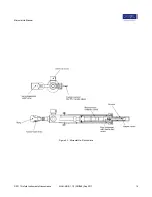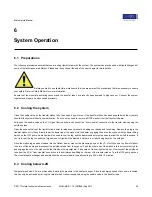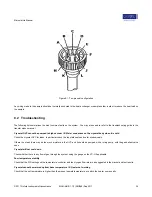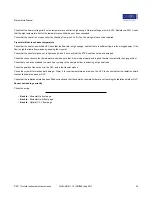
Microstat He Manual
7.3.1
Outer windows
To remove the outer windows, carefully remove the four nylon retaining screws. Carefully remove each window (take care to prevent them
from falling out) and clean using a suitable lens cleaner and lens tissue. Before the windows are replaced, check and clean the O-ring,
and lightly greasing with vacuum grease.
After you have replaced the O-ring, place the window on top and tighten the four nylon screws.
The nylon screws only need to be finger tight. Do not over tighten as this may damage the window or the screws.
The windows should be carefully tested for leaks with a mass spectrometer leak detector if one is available. Note however, some window
materials (for example polythene, mylar, and aluminised mylar) are porous to Helium gas at room temperature, and cannot be leak tested
in this way.
7.3.2
Radiation shield windows
The radiation shield windows are held in place by wire clips as shown below. Carefully prise the clip out of the window frame, and turn the
cryostat over to let the window drop out.
Clean the window with a suitable lens cleaner and lens tissue.
Use a very thin smear of Apiezon-N grease around the edge of the window to improve thermal contact with the cryostat body. When you
replace the window it should fit tightly in the mount. The pressure from the wire clip should be sufficient to make sure that the window is
cooled properly.
•
Next
© 2017 Oxford Instruments Nanoscience
MAN-MHE-1.1.0 (28ff3d8) Sep 2017
28








































